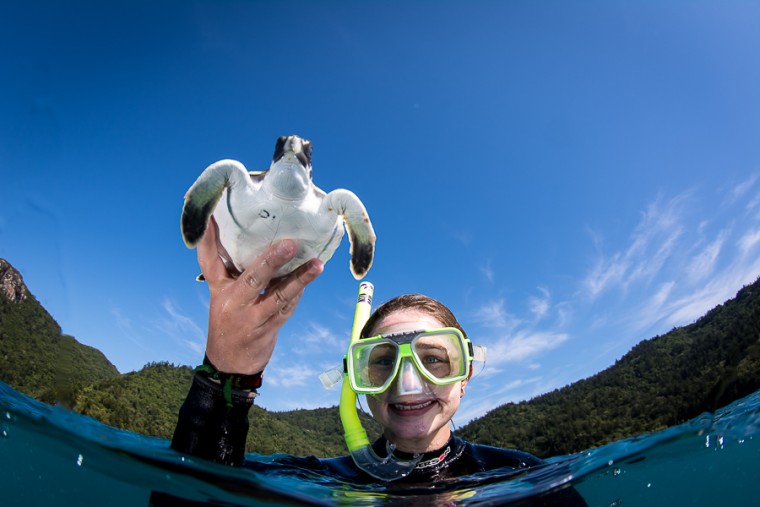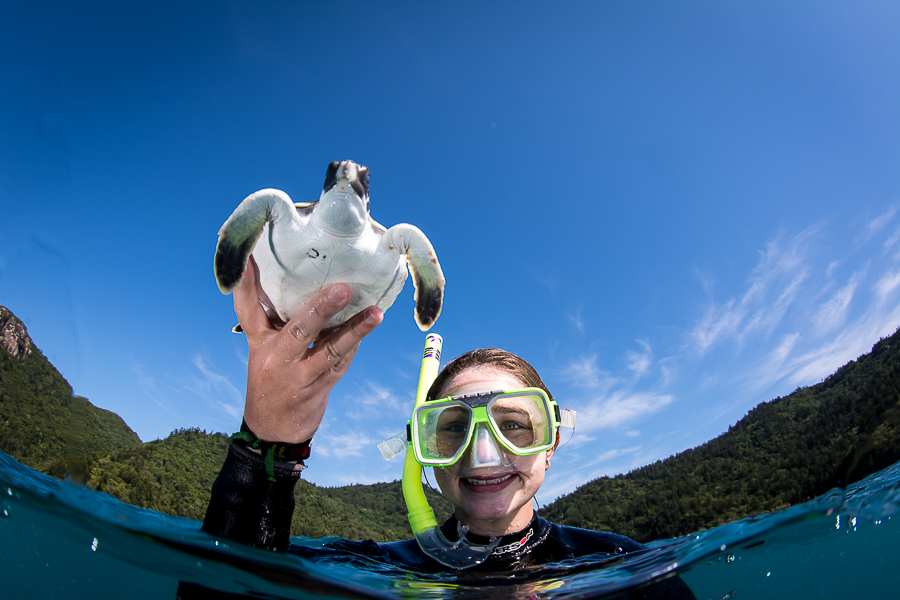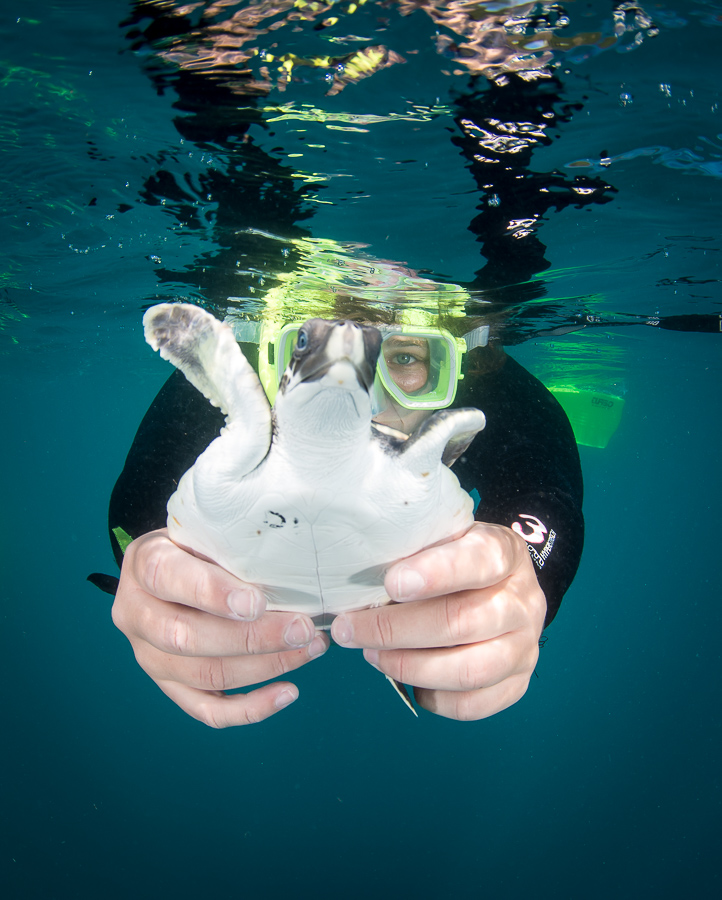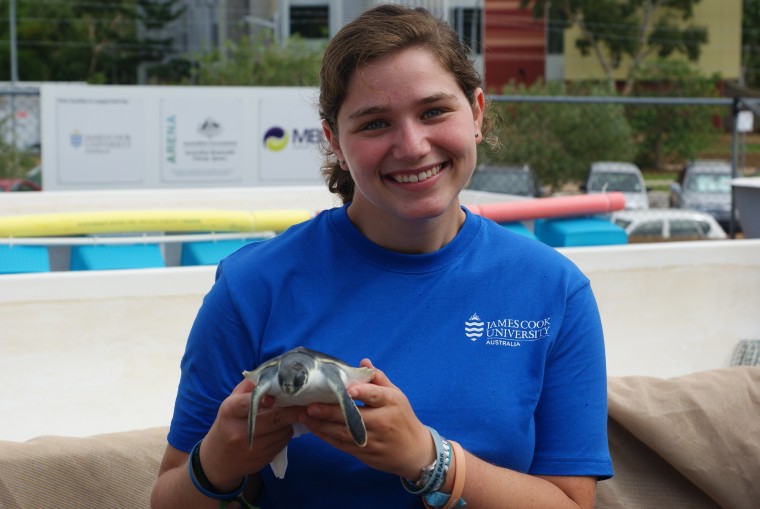While Studying Abroad, Nash ’16 Works with Rare Turtles in Australia


Chloe Nash ‘16, a double major in biology and environmental studies, contributed to groundbreaking research on the mysterious Flatback sea turtle — a species with only two photographs in the wild, both of the same individual turtle. While studying abroad in Australia last spring, Nash volunteered at James Cook University for a project that involved raising 30 flatbacks from hatchlings and attaching GPS devices to their shells.
The turtles were released in Australia’s Great Barrier Reef and seven are being tracked by satellite. This research is the first time Flatbacks, only found in Australia, have been monitored underwater.

“I was with them everyday essentially for four months, so they became like my children,” Nash said.
Nash worked as a volunteer, feeding them and cleaning their tanks. Over time, she learned to give them medication and teach them how to dive, which involved luring the turtles down with a food-carrying stick. Once the turtles reached 300 grams, they were strong enough to hold the satellite tags. The research sought to learn more about the Flatbacks’ lives in between hatching and nesting adults— a blank space in the marine biology field.
“One of my favorites named Ali got ill, and we thought he was going to pass away,” Nash said. “But we persevered and he persevered and I ended up getting to release him, which was really great. It was really crazy, just watching him grow.”
The turtles were released in the Whitsundays region of the Great Barrier Reef once they were deemed strong enough to survive. The project was supervised by Mark Hamann of James Cook University and Jeanette Wyneken of Florida Atlantic University in conjunction with a similar project in Western Australia.
Nash’s involvement with Flatback turtles was only one of multiple research ventures she had as part of her study abroad experience in Townsville. This month, a paper she co-authored titled “Acoustic Parameters of Guiana Dolphin (Sotalia guianensis) Whistles in the Southern Gulf of Venezuela” was accepted by the scientific journal Aquatic Mammals and will be published later this year.
“It’s a really interesting paper as it will be the first published description of the whistle acoustic structure of Guiana dolphins in the Gulf of Venezuela,” Nash explained. “And I had heaps of fun working on it!”

Conducting research continues to be a large part of Nash’s life back on campus. She is currently working on a thesis with the tentative title “Island Population Structure of HardHead Silversides.” The thesis will look at the genealogy of the fish species and already took her to Belize and Florida with faculty advisor Barry Chernoff to collect samples. Chernoff is the director of the College of the Environment, the Robert Schumann Professor of Environmental Studies, professor of biology, professor of earth and environmental sciences.
“As I get more results, more questions are being asked, and I’m really excited to see what will come of it,” she said.
Nash also currently co-teaches a student forum on marine biology with Abby Meyer ‘16.
“We had the idea since freshman year, it was just a matter of getting ourselves organized,” Nash said.
The material was gathered through their own experiences — multiple classes on marine biology and outside field research. Meyer did research in Panama on snails, and Nash has done research in South Africa on sharks and then on the sea turtles. Lectures take place weekly on a broad spectrum of topics relating to marine biology.
“We work out really well because she’s interested in invertebrates and I’m interested in vertebrates,” Nash noted. “We have a perfect mashup.”
Outside of academia, Nash loves to play music including the pipe organ. Nash never experienced seasons growing up as a native Louisianian, so this year she plans to take advantage New England’s multifaceted weather, starting with apple picking.
Nash is currently applying for doctoral programs in marine biology.
“I’ve always wanted to be a marine biologist since third grade,” she said. “I’m really enjoying the academic track so I figured why not just go for it.”

